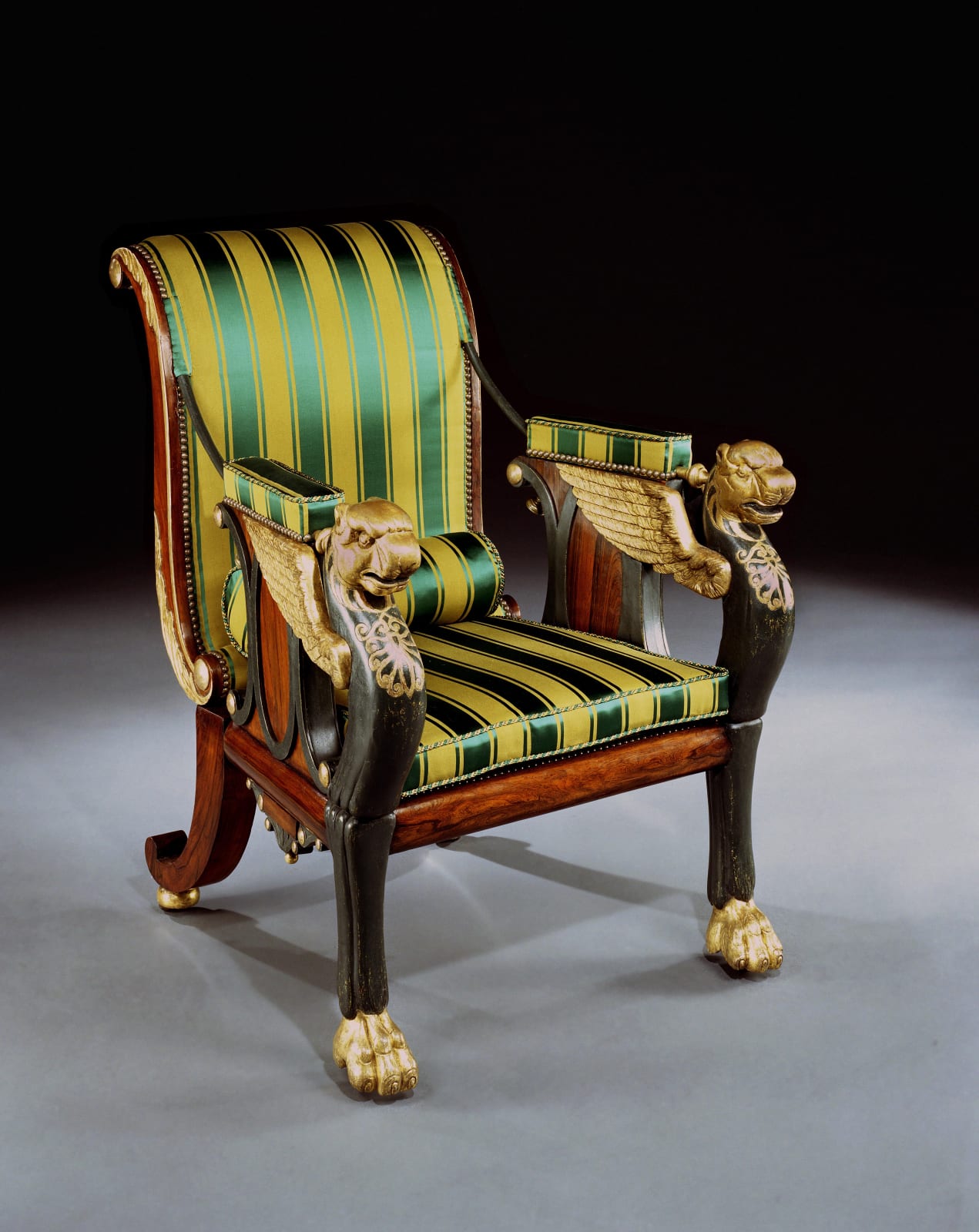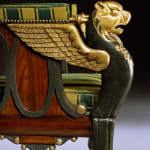
Ackermann’s Regency Furniture and Interiors, 1984, p. 72
WILLIAM POCOCK'S RECLINING PATENT CHAIR, English, circa 1815
Height (reclined): 34 in; 86.5 cm
Height of seat: 18 in; 46 cm
Width: 29 in; 73.5 cm
Depth (upright): 37 ¼ in; 94.5 cm
Depth (reclined): 45 ½ in; 115.5 cm
Further images
A Regency parcel gilt rosewood and bronze painted reclining chair.
Note: The chair was at one stage fitted with a sliding footrest, which is now missing.
This highly unusual and impressive chair is to date the only known realisation of Pocock’s design. The chair's reclining function is operated by means of an ingenious ratchet mechanism released by pulleys hidden within the rosewood sides.
Pocock published the prototype reclining chair in Ackermann’s Repository of Arts in February 1813.
William Pocock operated his business from a large showroom and workshops in Southampton Street, London. His speciality, mechanical furniture, was very much the vogue in the Regency period, and his ingenuity in developing new ideas led to a thriving business. His mechanical furniture included mattresses, tables and chairs, which were favoured by the War Office for campaigns abroad. This amazing chair is an example of his ability to combine current fashion with his cutting edge design.
Literature
Pauline Agius, Ackermann’s Regency Furniture and Interiors, 1984, p. 72.
Geoffrey Beard and Christopher Gilbert, The Dictionary of English Furniture Makers 1660-1840, 1986, pp. 703-70;
Simon Smynfen Jervis, ‘John Stafford of Bath and his Interior Decorations’, Furniture History Journal, 2009, p. 176.







